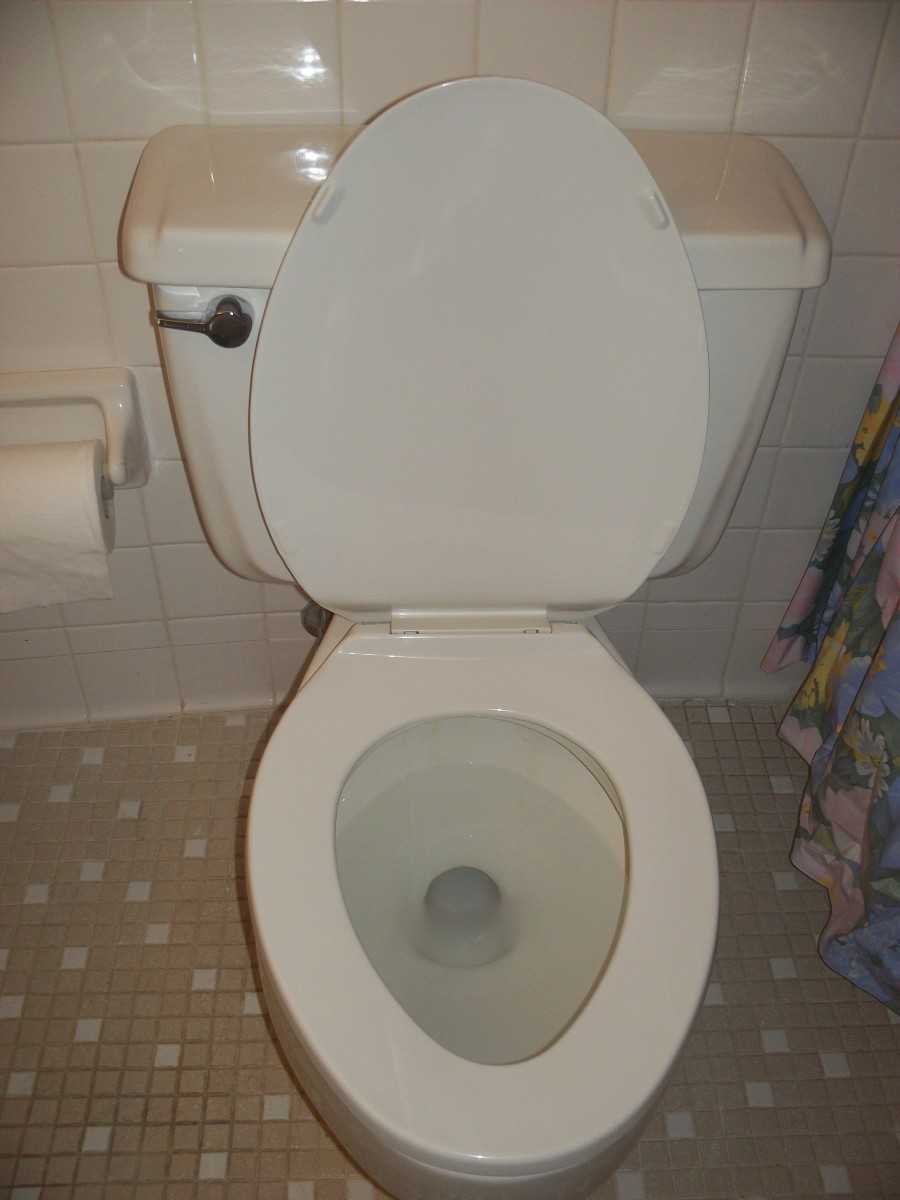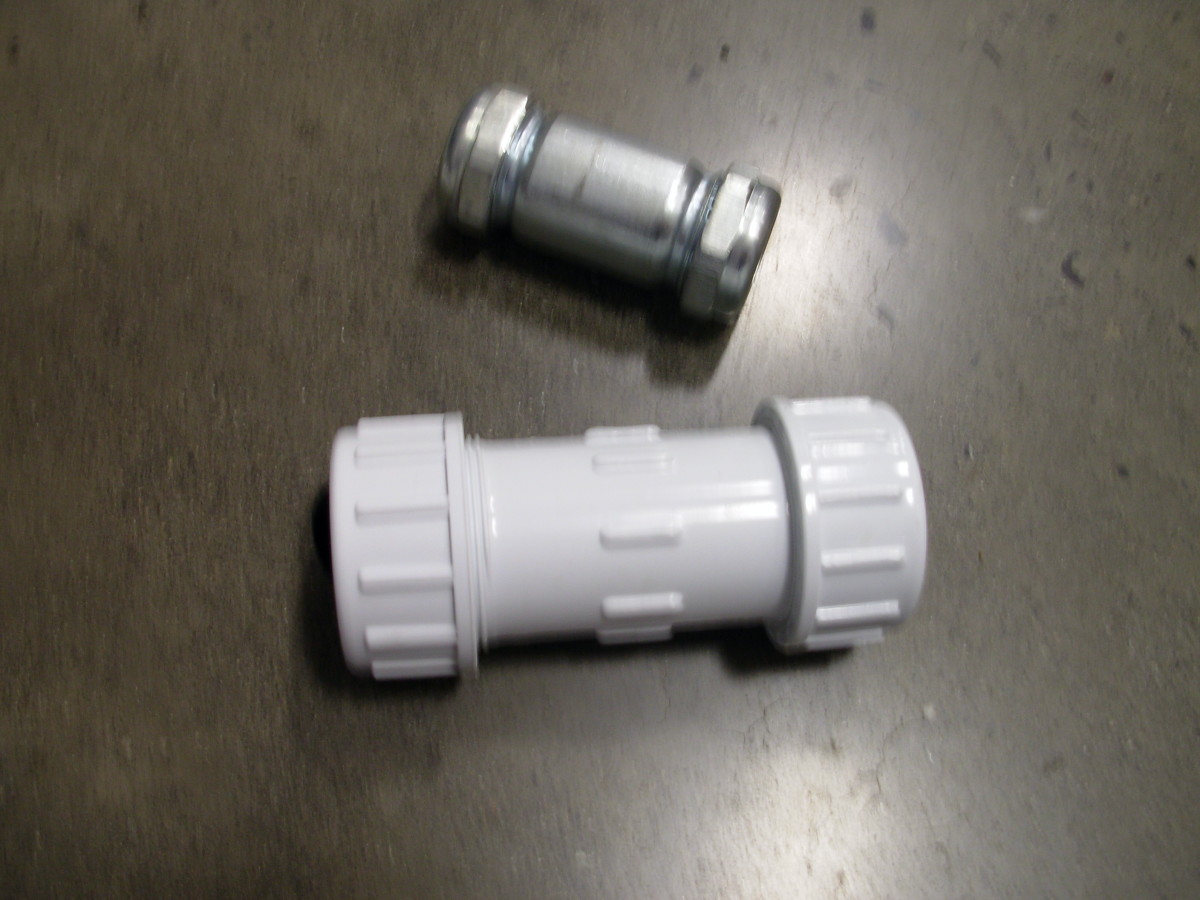How does a Septic and Sewer System Work?
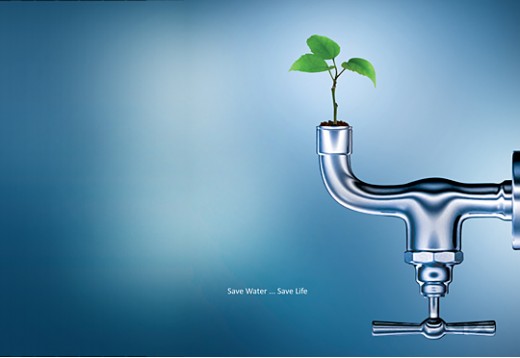
What are Septic Systems and Water Treatment Plants?
This is a follow up my How do Toilets Work article. You now know how a toilet works, so what happens after you flush it? With this article, you will learn what happens with the waste water and sewage after you flush your toilet.
Every time you flush the toilet, take a shower, wash dishes, or any other task inside a building that has a drain, creates waste water, or more bluntly, sewage. With the advances in modern science, design, and plumbing, this water is no longer kept inside the house, but brought to other places to be taken care of. But this raises a question. Why not just dump the sewage outside? Well there are 3 main reasons why we don’t. The first on is one of the more obvious reasons, and that simply is the smell. The second is all of the harmful bacteria, like E. coli, that can become a health hazard, and the last is that the solids and chemicals in the sewage can contaminate the soil and environment. For example, the wastewater contains nitrogen and phosphates that help encourage the growth of algae. When this decomposes, it releases bacteria that consume oxygen in water. This is what kills fish and other aquatic life that depends on oxygen in the water to live. Large communities and cities usually end up building wastewater treatment plants that handle the town’s sewage and treats them before being released back into the environment. For those though that live out in the country away from city sewer systems and city water, a septic system is usually used.
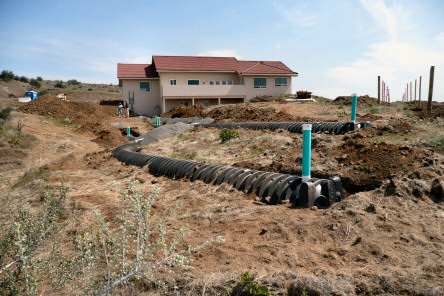
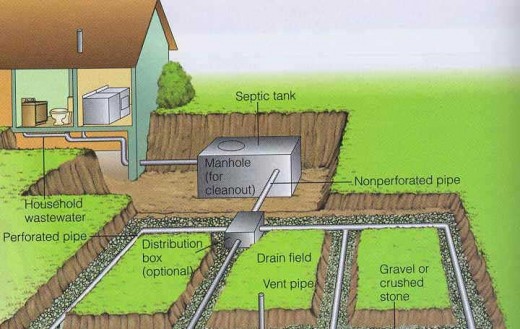
How Septic Systems Work
Septic Systems:
In the small rural areas where it’s not cost efficient, homeowners have there own small scale water treatment plants called septic tanks. Basically, a septic tank is a large steel or concrete tank that is buried on the property, and filters the sewage. Wastewater enters the inlet, and leaves at the other end. Most tanks usually hold roughly about 1,000 gallons, although the size, location, type, is all determined by the size of the property, the size of the home or building, the use, and other various factors. Septic tanks work by using gravity to hold the solid waste. As all the wastewater exits a building in the outlet pipe, it enters the septic system. Once it enters the system, anything heavier than water drops to the bottom of the holding tank, and all the fluids are sent via the outlet pipe on the septic tank, to the leaching field. The leaching field is where the wastewater is dumped. That is why most rural homes and properties have fields where the grass is always greener. The leaching fields are dug up plots of land, lined with gravel, about 4-6 feet deep, usually downhill from the septic tanks, and are a series of pipes with holes that allows the wastewater drip out. The solid material in the holding tank decomposes and as it breaks up, floats up to the outlet pipe and out to the leaching field. There are 3 layers in a septic tank. The top layer, or scum layer, is the part that has anything that will float. The middle layer is fairly clear water, and the bottom is the sludge and solid layer. It works by water displacement. As new water enters the septic tank, water that is already in the tank gets pushed out. When a septic system gets backed up, or when solid items are flushed into a septic system that are not septic tank friendly, backups and blockages can occur, which can be pricey, smelly, and downright disgusting. Having a plumbing service handy when dealing with a septic system is almost a requirement, as septic system repairs usually involve digging up the system and clearing any blockages. the good thing about septic systems is they are generally good for the environment and are generally self supportive, meaning the bacteria's that need to exist to break down the waste naturally occur inside the septic tank.
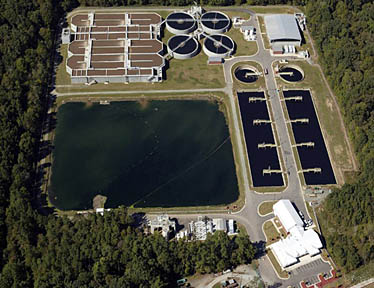
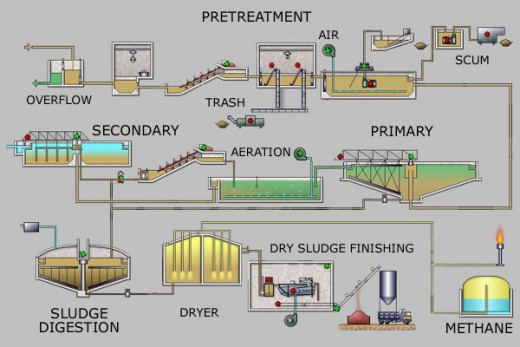
How Sewer Systems and Water Treatment Plants Work
Well this works well for individuals, with plenty of open space to have there own septic system. But what about a large city that doesn’t have the room to put in tons of septic systems? This problem has been solved by sewer systems and water treatment plants. A water treatment plant is basically nothing more than a giant septic system that services a large number of users at the same time. Like the septic system, water treatment plants generally try to remain gravity powered for as much as possible. Piping from each building connects to a city run and maintained sewer system, from which runs into other sewer pipes, and finally to the main outlet for the city to the treatment plant. Pipes in this system get progressively bigger as the system combines all the city’s sewers into main arteries. In occasions where gravity will not allow the sewage to flow, systems include grinder pumps, corkscrews, and lift stations. Sporadically, the sewer system has openings used for maintenance, and these are covered with round manhole covers. They chose round because the manhole covers (which weigh roughly 80 lbs) cannot fall inside them. Water Treatment plants are usually located in low laying areas so that gravity can help keep things moving. Water treatment facilities take the incoming sewage, remove most of the large solid material, and allow the liquid and smaller material to flow through grates and screens, each one smaller and thinner than the last, effectively straining the large particles from the liquid remains. The liquid is then chlorinated to kill bacteria and discharged. This is the primary step in water treatment. Facilities that are equipped with large, aerated tanks, and have special bacteria’s that will remove all the organic material and nutrients, which is the secondary treatment that can be preformed before the end result is dumped back into the environment, in large leaching fields like that of a home septic system. Before the water is disposed of, it is tested so that it won’t contaminate the surrounding land.
Some Helpful Links
- How to Stop a Squeak-y Pipe Behind a Wall, and Other Plumbing Tips
Knowing how to do simple plumbing things in the short run can help save you money in the long run, by fixing small problems before they become major issues. Always call a reputable plumber when things get too much to handle. - Winterizing Your Home Plumbing
Knowing how to do simple plumbing things in the short run can help save you money in the long run, by fixing small problems before they become major issues. Always call a reputable plumber when things get too much to handle. - Plumbing 101
Plumbing is one of the things that most people don't think about, until there is a problem. knowing your enemy is half the battle, so get to know your plumbing system, and learn a few things you might not have known before. - How Stuff Works: Sewer and Septic Systems
Each time you flush the toilet or wash something down the sink's drain, you create sewage (also known in polite society as wastewater). Find out where it goes and how it's treated before it flows into a river near you! - How Does a Toilet Work?
Ever wondered what makes a toilet work? Find out how here, in full detail! - Home
Local Destin Plumbing servies



